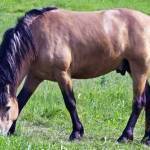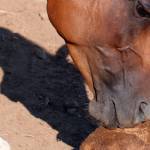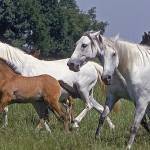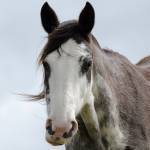Saliva and Gastric Ulcer Status in Horses
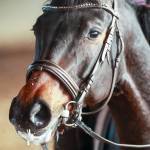
A small but mighty pilot study found that measuring ammonia and bicarbonate levels in saliva can potentially identify horses with equine gastric ulcer syndrome (EGUS), both glandular and squamous disease.* Additional studies are needed to further determine the clinical use of this test, and whether measuring these levels can be used to assess response to treatment.
In the study, saliva samples were collected from client-owned horses presented to European veterinary hospitals for either evaluation of gastrointestinal disturbances or healthy horses undergoing elective surgery (castration).
“Studies in humans and rats show that elevated levels of ammonia may cause gastric ulcers, potentially by decreasing viability of the cells lining the stomach wall (the mucosa) or by exerting direct toxic effects on gastric cells,” explained Catherine Whitehouse, M.S., an advisor for Kentucky Equine Research.
In contrast, bicarbonate has a buffering action, potentially serving a protective function in the stomach against ulcers.
According to the researchers, “Bicarbonate is produced by the gastric and duodenal mucosal cells, and regulates the pH of the mucus, ensuring an optimal range for enhancing its barrier properties and acting as an important mucosal defense mechanism.”
To determine if ammonia and bicarbonate could reliably be measured in saliva and to compare the levels of these analytes between healthy horses and those with EGUS, 122 horses were recruited. All horses had saliva samples collected directly before undergoing gastroscopy to assess the stomach lining using established guidelines.**
Of the 122 horses, 31 were deemed healthy, 71 horses (58%) were diagnosed with EGUS, and 20 horses (16%) had “other” gastrointestinal diseases. Of the 71 horses with EGUS, 21 had squamous disease, 25 had glandular disease, and 25 horses had ulcers in both the squamous (upper) and glandular (lower) regions of the stomach.
“As hypothesized, ammonia and bicarbonate could reliably be analyzed in the saliva of horses. Ammonia levels were significantly higher in the EGUS group compared to the healthy horses, but ammonia levels could not distinguish between horses with glandular versus squamous disease. Further, ammonia levels were higher in the horses with ‘other’ gastrointestinal disturbances than the healthy horses but were not significantly different from horses with EGUS,” Whitehouse explained.
In terms of bicarbonate, Whitehouse said, “Bicarbonate levels were lower in horses with EGUS compared to healthy horses. When comparing glandular, squamous, or both to healthy horses, only the bicarbonate levels from horses with squamous disease were significantly lower. Horses with ‘other’ gastrointestinal disturbances had significantly higher bicarbonate levels than horses with EGUS.”
Together, these data show that ammonia and bicarbonate can reliably be measured in saliva samples, and that these levels show some difference between healthy horses and those with gastrointestinal disturbances, including EGUS.
The research team additionally noted that studies investigating the relationship between gastric juice contents and saliva are warranted to understand the role of these potential biomarkers and their future applications.
“This study suggested there may be less buffering from the saliva in horses with EGUS. Supporting gastric health with digestive buffers has been a longstanding recommendation for horses with EGUS to help neutralize gastric acid. Feeding a digestive buffer two to three times per day, particularly before exercise, can increase gastric pH by neutralizing acid and potentially improve the horse’s comfort,” recommended Whitehouse.
For more information on the dietary management of EGUS, read a Q&A with expert Dr. Ben Sykes in the proceedings of the 27th Equine Health and Nutrition Conference, hosted by Kentucky Equine Research. The title of the article is “Squamous and Glandular Gastric Ulcers: New Treatment Options.”
*Muñoz-Prieto, A., E. Llamas-Amor, M.D. Contreras-Aguilar, I. Ayala, M.M. Cuervo, J.J. Cerόn, and S. Hansen. 2024. Automated spectrophotometric assays for the measurement of ammonia and bicarbonate in saliva of horses: Analytical validation and changes in equine gastric ulcer syndrome (EGUS). Metabolites 14(3):147.
**Sykes, B.W., M. Hewetson, R.J. Hepburn, N. Luthersson, and Y. Tamzali. 2015. European College of Equine Internal Medicine consensus statement—Equine gastric ulcer syndrome in adult horses. Journal of Veterinary Internal Medicine 29:1288–1299.





